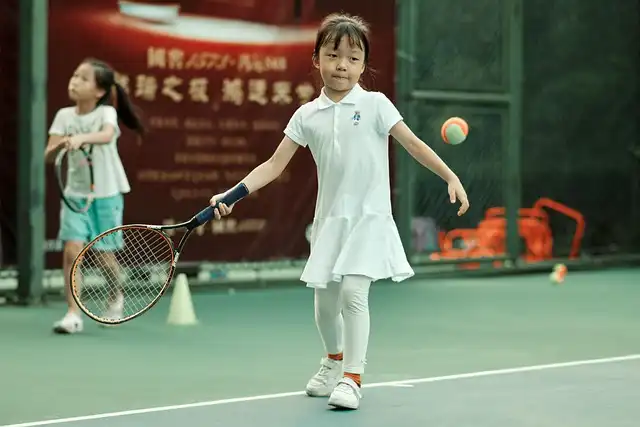Supreme Court: Disability Discrimination Standard Lowered for Schools

The Supreme Court lowered the standard for disability discrimination claims against schools, aligning them with other settings under the ADA and Rehabilitation Act, benefiting students like Ava.
When Ava’s moms and dads sued the area under the ADA and Area 504 of the Recovery Act to permanently secure her right to a complete college day and obtain financial problems for the educational time she missed out on, a district court ruled for the district, stating the area’s activities really did not fulfill the greater “bad confidence and gross misjudgement” requirement.
Background of Ava’s Case
Special needs supporters commemorating Thursday’s decision, however, said the higher requirement made it hard for pupils with disabilities to access treatments when their right to a cost-free and appropriate education and learning is breached.
“Public education is rife with ‘diverse therapy,’ or ‘discrimination’ based on subjective, individualized analyses,” said in a friend-of-the-court short filed in support of the institution area by AASA, The Institution Superintendents Organization, and various other education and learning organizations. Pupils are separated into restorative, grade-level, and advanced-placement courses. Pupils are seated alphabetically. Some pupils make the beach ball groups.” A simple error or a different judgment on a judgment phone call ought to not occasion an honor of money damages.
Ava and her moms and dads originally submitted an issue with the Minnesota Department of Education, claiming they were rejected a “totally free, appropriate public education” as required under IDEA. An administrative legislation court regulationed in Ava’s support.
Supreme Court’s Narrow Decision
Thus, Roberts classified the question provided as a “narrow one” and the decision as a result “narrow” too. He added that the ruling’s extent however “does not reduce its import” for the teenager who brought the case and “an excellent numerous kids with disabilities and their parents.”
Throughout oral disagreements in April, the Minnesota area had actually asked the High court to make the greater standard of “bad faith or gross misjudgement” the standard for all handicap cases– not simply those in educational setups. However the justices declined to do so, claiming it would certainly be “unfair” as those debates “have actually not been totally provided.”
Implications of the Ruling
On the other hand, trainees in schools located in various other appellate territories and Americans outside education and learning setups who assert handicap discrimination, and also are covered by ADA and the Rehab Act, just have to show that an entity such as a college or office showed “intentional indifference.”
The viewpoint in A.J.T. v. Osseo Location Schools, Independent College Dist. No. 279, written by Principal Justice John Roberts, undid a choice by the 8th U.S. Circuit Court of Appeals that needed pupils with impairments to meet a higher lawful criterion contrasted to disability cases outside of educational settings.
“A plain error or a different judgment on a judgment telephone call must not occasion an award of money damages. “So, the bar hasn’t been razed completely to the ground. It’s a reduced bar.”
This site is owned and operated by Informa TechTarget, component of a global network that informs, affects and links the world’s technology buyers and sellers. All copyright resides with them. Informa PLC’s licensed workplace is 5 Howick Area, London SW1P 1WG. Registered in England and Wales. TechTarget, Inc.’s authorized office is 275 Grove St. Newton, MA 02466.
The instance was brought by the moms and dads of A.J.T., referenced in court records as “Ava,” a trainee with serious epilepsy. Ava’s moms and dads filed a claim against the district in 2018 after Osseo Location Schools declined their ask for evening direction despite Ava’s special needs stopping her from participating in school before noontime.
Perspectives on the Decision
“Today’s choice confirms that trainees with impairments deserve to seek justice for discrimination in schools without encountering legal obstacles that do not exist in workplaces, real estate, or other areas of public life,” claimed Shira Wakschlag, elderly executive police officer of lawful campaigning for and basic guidance for The Arc, a not-for-profit that supporters for people with developmental and intellectual impairments and had actually submitted an amicus short in support of Ava and her family members.
Thursday’s decision preserves the last, reduced criterion for all institutions instead of requiring that students fulfill the greater bar to confirm an area discriminated based upon handicap and that they are entitled to monetary damages.
Mark Sommaruga, a companion at law firm Pullman & Comley who represents school districts, stated that although the ruling decreases bench for some colleges, generating income damages would still require a show of deliberate discrimination. The case highlights the demand to educate college staff, he claimed.
“Public education and learning is swarming with ‘diverse therapy,’ or ‘discrimination’ based on subjective, individualized analyses,” said in a friend-of-the-court short filed in support of the institution district by AASA, The School Superintendents Organization, and various other education organizations. “Teachers designate qualities. Pupils are divided into restorative, grade-level, and advanced-placement classes. Pupils are seated alphabetically. Some trainees make the volley ball groups. Others are reduced.”
At Ava’s previous school in Kentucky, she obtained instruction from midday till 6 p.m., per court papers. As soon as Ava’s family relocated to the Minnesota area, her parents stated she received less than half the training time that her peers obtained.
Institutions in some locations will deal with increased monetary obligation for ideal and free education and learning infractions– bringing them in accordance with territories in the remainder of the nation– as an outcome of the U.S. High court’s unanimous decision Thursday in a crucial special education situation.
Those in favor of a higher legal bar for disability insurance claims in education and learning versus other settings say it takes into account the one-of-a-kind nature of school settings and customized education and learning programs, which students and families can sometimes disagree with.
Until now, students under the jurisdiction of the 8th Circuit and 4 extra appellate circuits that have the greater requirement were required to show that schools acted in “bad faith or gross misjudgment” when pupils looked for alleviation for discrimination relating to their education and learning under the Americans with Disabilities Act and the Rehabilitation Act of 1973. The greater standard affected 46,000 institutions and 8 million kids covered by the People with Handicaps Education And Learning Act, with some 30,000 complaints presently pending, according to Osseo Location Schools’ attorney, Lisa Blatt.
1 Adversary Operations Adam2 disability discrimination
3 legal standard
4 Rehabilitation Act
5 state special education
6 Supreme Court
« School Choice Debate: Tax Credits & Public School FundingCredit Card Rewards & Student Loan Crunch: New Financial Pressures »
